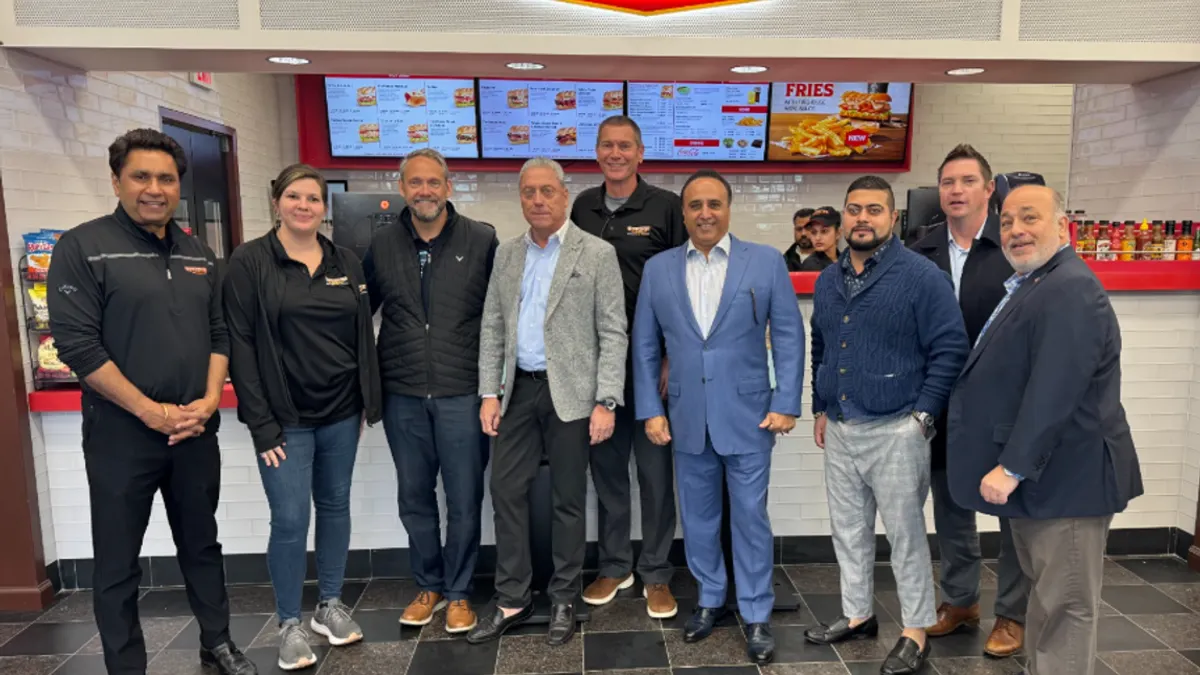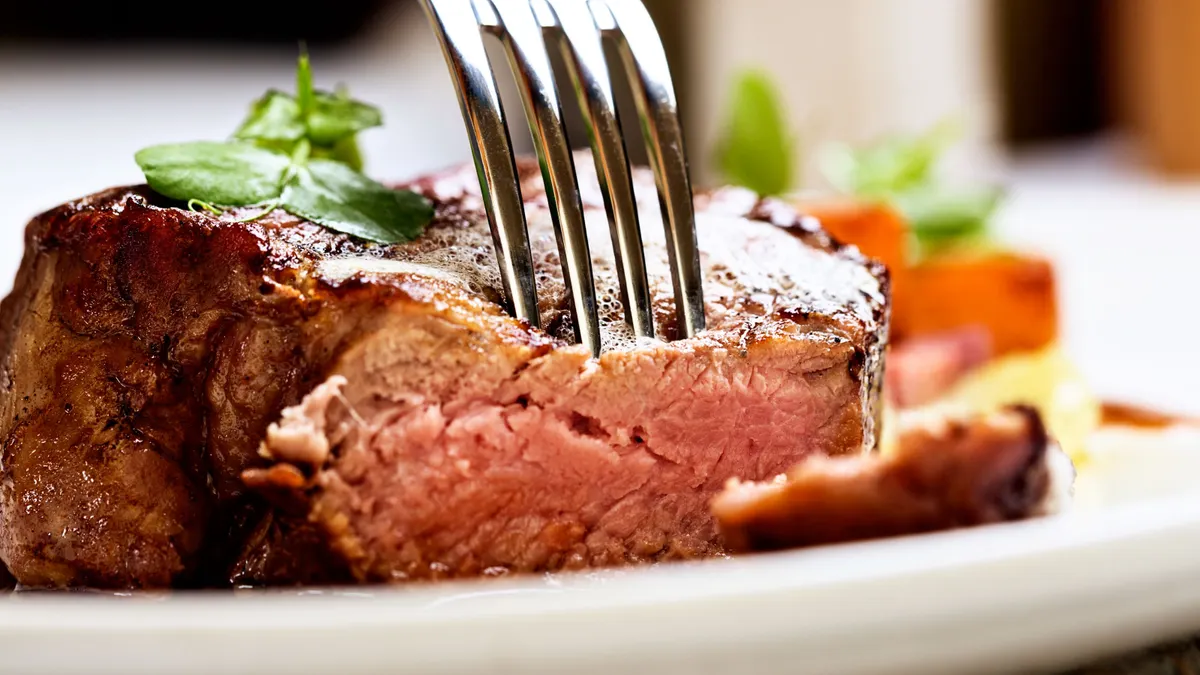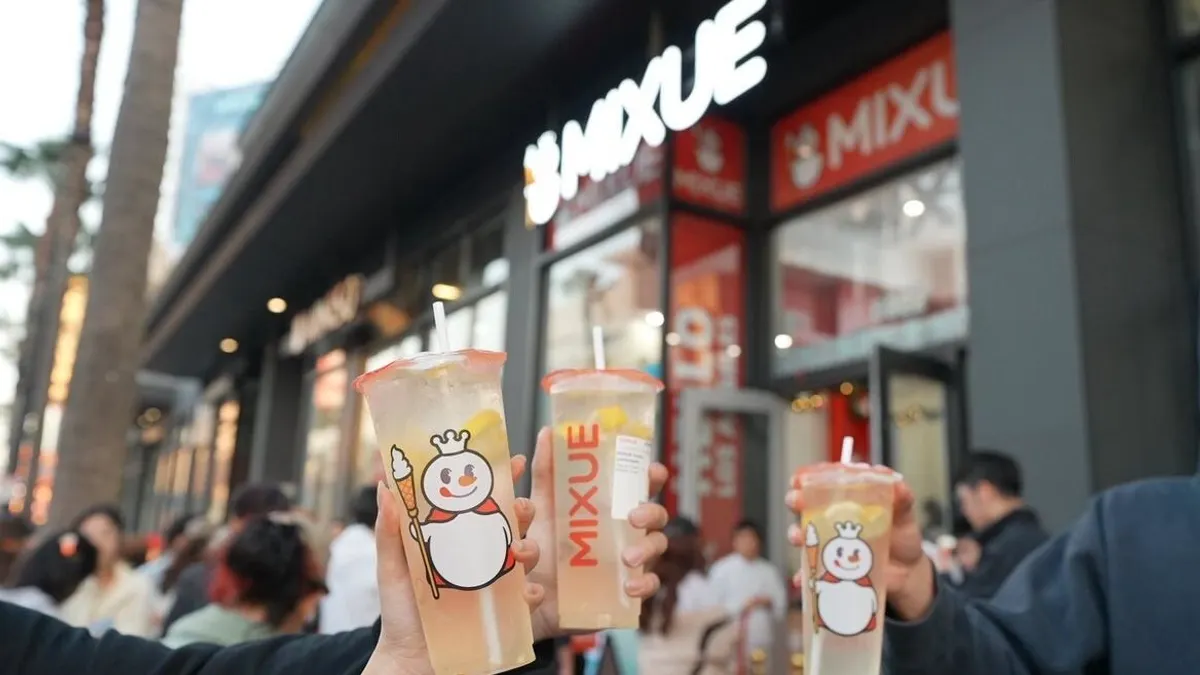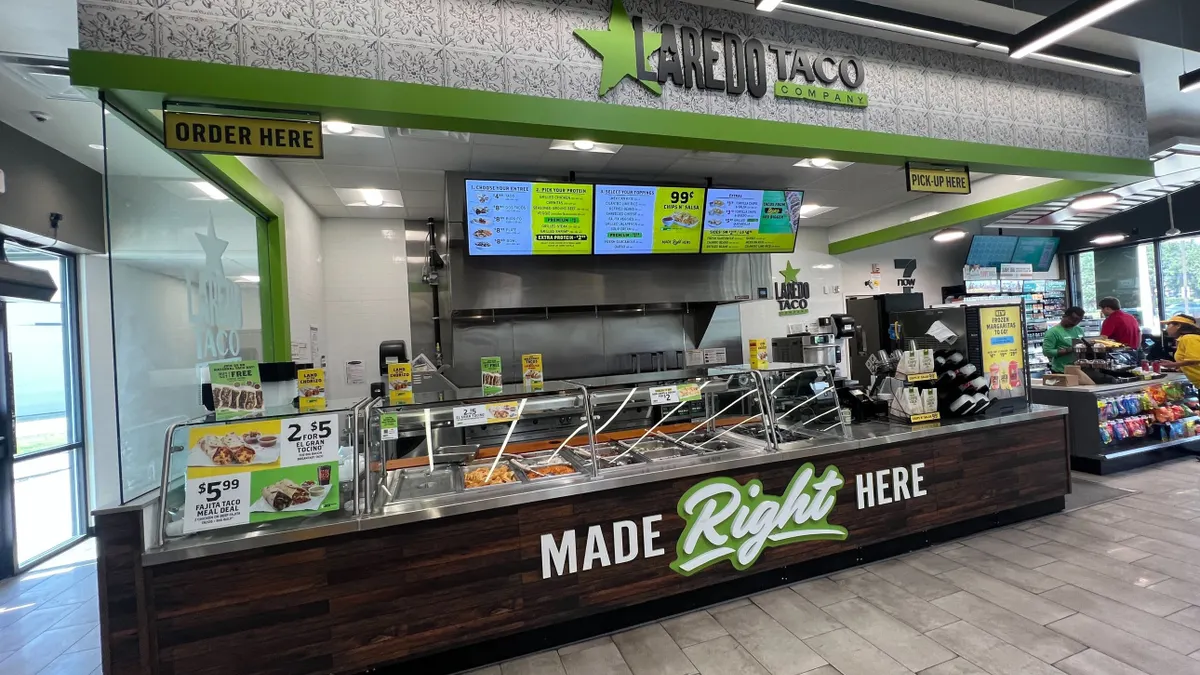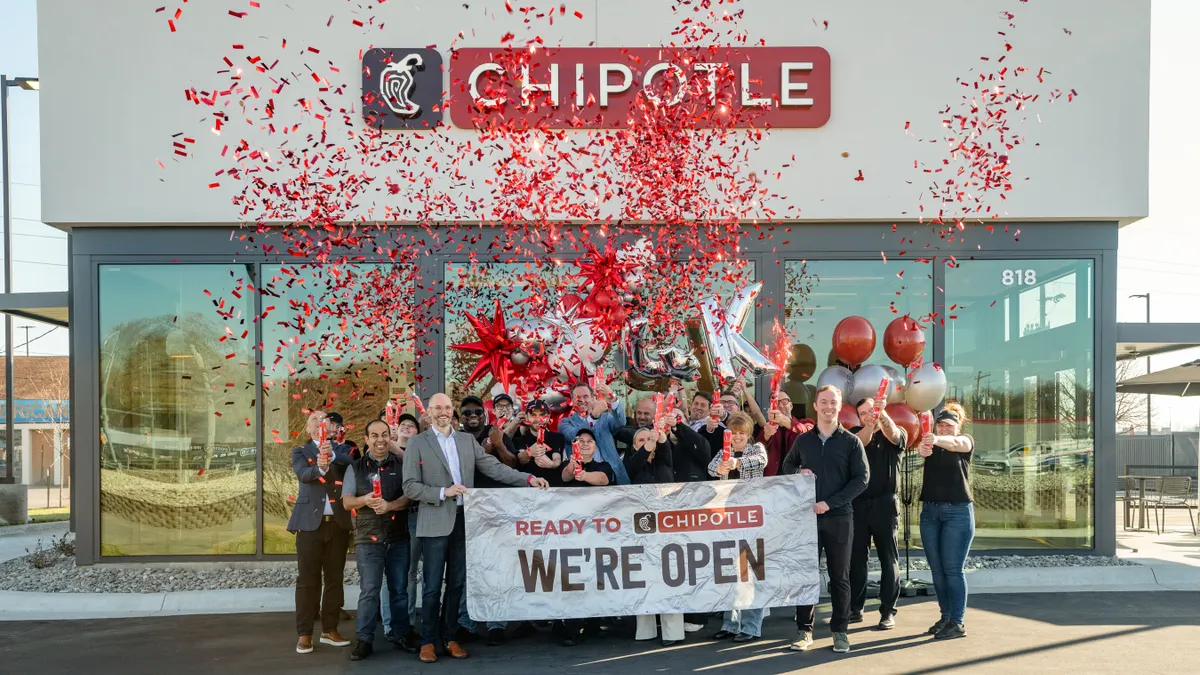AI is arguably the hottest technology in the restaurant space, with many operators exploring applications to ease pressure from inflation and rising labor, food, and occupancy costs.
“The whole use of AI at restaurants is accelerating,” said Brandon Barton, CEO of Bite, which makes AI-powered food-ordering kiosks.
Many executives think the hype around AI is warranted. White Castle Vice President Jamie Richardson, for example, said the technology holds “unlimited” potential to improve operations, as well as employee and guest experience.
But adopting AI requires “patience and perseverance — and a focus on remembering the larger goal you are trying to achieve,” he wrote in an email. That’s been White Castle’s experience with its Julia system, which communicates with drive-thru customers through SoundHound’s voice recognition software.
White Castle began piloting voice AI at the drive-thrus of select -restaurants last year, and the application is “getting better all the time,” Richardson said.
Since its implementation, Julia has helped White Castle’s team members engage with customers and invest more of their time in ensuring order accuracy and fostering a friendly environment.
White Castle is one of many restaurants that have embraced AI in recent years. The technology has helped fast casual and fast food restaurants interact with customers either at kiosks or over the phone and at the drive-thru. It can also help restaurants with back-of-house activities, such as managing reservations and order inventory.
Check out four AI use cases restaurants can implement today or in the near future, according to experts.
Drive-thru support
A growing number of restaurant operators are deploying AI ordering technology for their phone and drive-thru systems, Ben Bellettini, senior vice president of restaurant sales at SoundHound, wrote in an email.
To date, over 10,000 restaurants in the U.S. use SoundHound’s voice AI technology, including White Castle and Jersey Mike’s, said Bellettini. Employee intervention is needed about 5% to 10% of the time when SoundHound’s voice AI is used during customer orders, said Bellittini.
Bite’s kiosks don’t include drive-thru voice ordering, but Barton said it can sometimes be difficult for such AI technology to recognize an order when a loud truck drives by, or when someone has a certain regional accent.
“Nobody really has deployed voice AI at scale yet and there still needs to be some human interaction to ensure that [the technology is] getting the order correct,” he said.
But the technology is getting better each year, Barton added. He predicts voice AI will be implemented at scale at the drive-thru over the next couple of years.
Voice AI technology can help restaurants solve labor shortage issues, Bellettini said. The technology is faster, more accurate and more consistent than human employees, he said, allowing restaurants to process orders quicker and yield higher revenue.
Drive-thrus can operate faster with AI, Bellettini said, because the tech can instantly engage with the customer as they pull up to the speaker post, compared to an employee, who often takes about 30 seconds to engage.
Voice AI at the drive-thru also removes multitasking pressure from restaurant employees, since it allows them to spend less time engaging with customers at the drive-thru and more time focusing on making food, engaging with customers in the store or at the drive-thru, and working collaboratively with their team members, he said.
Integration in digital kiosks
The drive-thru and the phones aren’t the only ways restaurant customers are interacting with AI when ordering food.
Bite incorporates AI into its in-store, touch-screen, food-ordering kiosks at restaurant chains including Togo’s, California Fish Grill and Fazoli's, said Barton.
AI helps the software layer of Bite’s kiosks to identify repeat customers and loyalty members when they enter their phone number or, when they opt in, to be recognized through facial recognition biometrics, said Barton.
The kiosks then make personalized food recommendations to consumers, factoring in everything from the time of day, weather and ordering patterns in the region or at the specific restaurant that day, said Barton.
The kiosks will flash personalized menu recommendations based on a consumer’s past orders — such as a new spicy chicken sandwich for someone who likes spicy food — or speed up the transaction during lunch rushes by offering a slimmed-down menu. The Bite kiosks can also display ways guests can customize their orders, such as asking if they want bacon on their burger, he said.
Through this technology, checks, on average, increase 15% to 25%, said Barton. “Guests are spending more and we attribute that to them having an easier and better ordering experience.”
The proper deployment of AI “should be reducing food costs, it should be reducing labor costs overall, and it should be making the teams’ jobs that they do more high-touch, or high impact,” said Barton. “The result is the increasing of guest satisfaction scores and their feelings towards hospitality.”
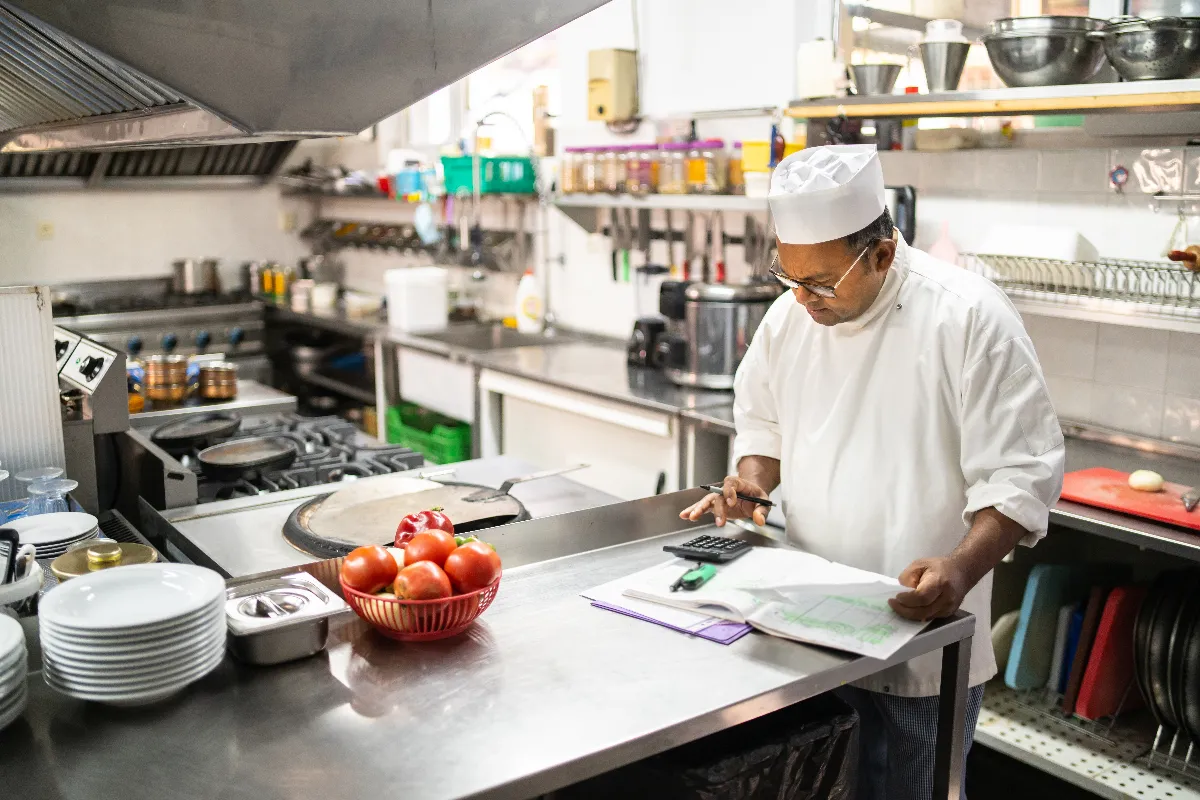
Employee assistance with food prep
Some restaurants are utilizing SoundHound’s employee assist voice technology, which provides instant answers to urgent employee questions over a headset or tablet, such as how to prep a particular item or information about a product’s ingredients or allergens, he said.
The technology, released last year, can tell an employee how long to cook french fries or onion rings, how many pumps of syrup are needed when making a vanilla iced coffee, or the cleaning solution needed to clean the griddle. So far, a handful of “well-known restaurants” are currently testing or deploying the technology, a company spokesperson stated, but didn’t disclose specific brands.
That technology, said Bellettini, helps restaurant operators ensure that food is always prepared to standard across all locations as they hire and train new employees.
“This enables them to help customers without ever having to pick up a manual or distract another member of the team,” said Bellettini.
Forecasting customer and product demand
Restaurants will also soon start leaning heavily on AI to analyze guest data to help them forecast demand, predicts Matt Tucker, head of reservation management software firm Tock.
Tock is currently exploring how to incorporate AI into its waitlist and walk-in platforms, said Tucker. That means AI could play a larger role in determining how long guests will wait for a seat at a particular restaurant.
AI can bring together disparate data points to optimize restaurant operations and provide tools that improve staff scheduling, waste management, and quality control, said Tucker. Those tools could “help remove the guesswork for operators,” he said.
AI won’t replace the human touch in hospitality, said Tucker, but it will automate recurring tasks like determining when to reorder inventory based on ingredients used in dishes sold during the past week.
When AI is integrated into inventory-ordering operations, the technology could predict what customers will be ordering, said Barton. That allows restaurants to plan ahead better through more complex algorithms beyond using simply ordering based on the average of what people purchased over the past seven Fridays, he said.
And while there are still variables, such as the quality or shelf-life of the product that’s delivered to the restaurant, AI will make ordering inventory more accurate, he said.
“The old way to do this was just using averages, and the new way is using AI. It’s going to be more accurate,” said Barton. “Generally speaking, if you’re deploying AI into your ordering processes, into your recipe processes, then you will be lowering your food costs.”






